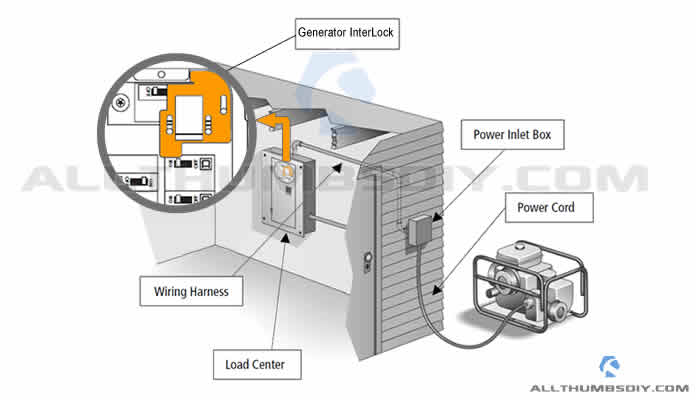Table of Content
In all cases double-check continuity between the frame and earth by an ohmmeter. Let me start by saying that the safest way of connecting a portable generator set or any other power source to a house wiring is via atransfer system. The question of course is what to do if you don’t have one and a power outage caught you off guard? Fortunately, there are still some ways of energizing your house without a transfer switch, especially if you have a drier line.
A generator is a great way to provide power to your home during an emergency. But there are some things you need to know before you can use one safely. We offer commercial and residential generator sales, installation, and service.
Home Standby Pros
You can save thousands by opting for a portable generator. One of the first decisions many homeowners make when deciding on backup power is whether to use a portable or a home standby generator. The “Automatic” transfer switch is also called a Universal Transfer Switch or UTS. The UTS will manage available power to whichever applications you set as a priority.
This produces a cleaner, steadier, and more consistent flow of power. For example, you might use the UPS to power your garage door, a few lights, or your computer to check the weather forecast. Automatic Transfer Switch The UTS, or Universal Transfer Switch, automatically handles many of your power needs during an outage. You can determine which items have the highest priority.
What Size Wire for 70 Amp Breaker?
A transfer switch is the easiest way to power your home during an outage. Home standby units are only good for powering your home, and if you move, you can’t take them with you. And unfortunately, the value of your home does not typically increase enough to recoup the cost of a home standby generator. Never operate a generator inside a house, garage, basement, crawl space, or any enclosed or partially enclosed space unless an approved exhaust system is installed.
How to Build a Boot Cleaning Station You can build this handy boot station with just a few essential tools and some lumber. Park it right outside your door, so you can effortlessly scrape off any muck and snow on your shoes all fall and winter. This simple DIY project only takes an hour to complete, plus no more tracking dirt into the house.
Champion Power Equipment Inverter Generator
This kit will allow you to safely connect your generator to the main electrical panel of your home. Furthermore, it is ideal to use an automatic transfer switch for connecting generator to house, especially if you have more extensive and higher voltage generators. Remember, you can always use extension cords to feed stand-alone appliances.
A transfer switch is the only safe way to directly connect the generator to your home. A licensed electrician is recommended to install your transfer switch. Your local Honda dealer can often recommend a good electrician to help you with this. Transfer switch ensures that there is no type of power overlap directly related to the safety and security of people and infrastructure. In the case of Universal Automatic Transfer Switches , the system can connect and disconnect loads and make even more hassle-free arrangements for backup power.
However, it is the only guaranteed legal option and it is accordingly the safest. This will help keep you from accidentally electrocuting someone else or even yourself. Plug the generator into the inlet box and check that it has enough oil.
A transfer switch, by design, does not allow the generator to backfeed through the main. It doesn't rely on you to remember to switch anything. The transfer switch mechanically either allows your selected house circuits to get power from the main or to get power from the generator, but not both at the same time. This system costs about $70 in cable and connectors. You could also place a 240v outlet near where the generator will be used and plug in there.
This allows a smaller generator to power more critical appliances in your home. For example, you might want to power your furnace, well pump, refrigerator, and some lights. A transfer switch eliminates the risk of back-feeding.

You will need to pick up a wire splice at your local home store. Try to get the conduit hole as close to the panel as you can. For the sake of this build we are going to assume you have a 30 amp plug on your generator - like the one shown.
Now, install a power supply panel outside your home and then connect it to the transfer switch using wires. Both switches perform the same task, i.e., reliably connecting backup power systems. But automatic transfer switches are more intelligent. They can detect various available power sources and decide which one is to be used. They can change the position of circuit breakers to desired power option accordingly.

Finally, start the engine in accordance with the operating manual. Maintenance should be conducted regularly to ensure the generator is in good working order. As a general rule, it’s recommended to consult a qualified electrician when installing any electrical equipment related to your generator. Generally, for larger generators, you’ll need a double-pole breaker with a higher voltage and current rating than a single-pole breaker. Additionally, you’ll want to select a manual-reset breaker that’s designed specifically for generator use.
Match the holes at the end of the generator's cord to the prongs on your hookup. You will likely have to then turn the plug connection to complete the connection . I am an electrical engineer, and I am crazy about AC machines and generators. I created this website to share my knowledge about generators and help other people. On weekends, I like to travel in my RV with my wife and kids.


No comments:
Post a Comment